Builder’s Level vs Transit Level: What’s the Difference?
-
- Last updated:
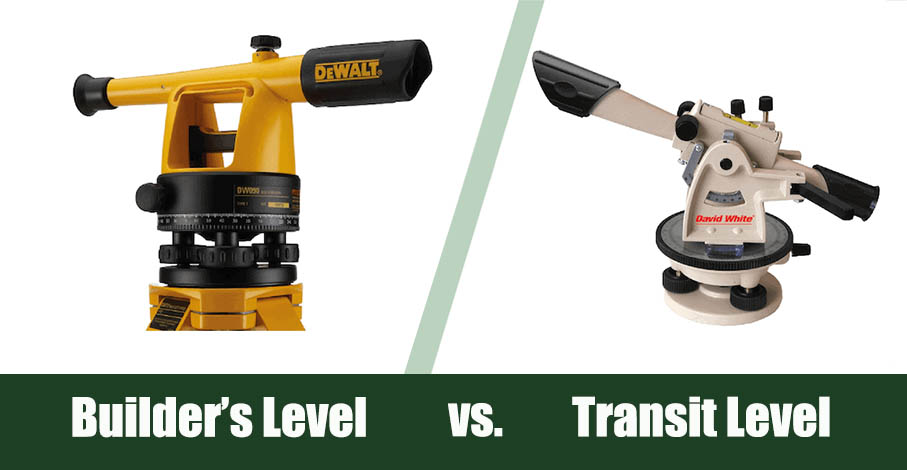

Looking at a builder’s level and a transit level side by side, you’d be forgiven for mistaking them for the same tool if you haven’t used both before. Not only do they look almost identical, but they also perform practically the same function. However, one key difference sets the transit level apart; it can measure vertical angles.
Aside from this one difference, these two tools are almost the same. They operate the same way, and the tripods and measuring rods used for each are even interchangeable. So, why might you choose one over the other? Are there any other differences between these two almost-identical tools? Let’s take a closer look at each and find out.

Overview of Builder’s Level
Builder’s levels more commonly go by the name of dumpy levels. They’re a relatively simple device that has been used for many decades, though they’re not as common today since newer tools have decreased the need for their limited functionality.

How Does a Builder’s Level Work?
The builder’s level is pretty straightforward. It’s just a small telescope on a leveling block that allows you to adjust the position 360°. This means that you can turn the level in a complete circle, and it remains level no matter which direction it’s pointing.
To set it up, you must first set up a heavy-duty tripod. The builder’s level will mount securely onto the tripod. Then, you can use the level adjusters to set the level, moving the telescope around to ensure it’s level at all 360°.
But you can’t use the builder’s level by yourself. There must be something to measure. So, you’ll need a partner standing at another location holding a measuring rod. Crosshairs in the level will allow you to pinpoint a measurement on the rod, which you can then compare to measurements taken from other points.
What It’s Used For
Each time you move the measuring rod, the level remains in the same place, allowing you to get the relative elevations of many points. This allows you to see the high and low points in an area for grading, leveling, building, surveying, and more. It’s a necessary practice before starting construction on almost any project.
However, the builder’s level can only move horizontally. Once it’s set, you can no longer adjust it vertically. If you attempt to do so, you’ll have to reset it and retake all your measurements.
- More affordable
- Easier to use
- Lightweight
- Easier setup
- Not as precise
- Can’t measure angles

Overview of Transit Level
Transit levels look almost identical to the builder’s levels. They feature a telescope on top of a mounting system with a small level installed so that you can ensure it’s completely level at all points in a circle before taking measurements. Like builder’s levels, these have been in use for many years, though newer models are far more sophisticated, with some even employing computer technology and laser beams to measure elevations, angles, and more.
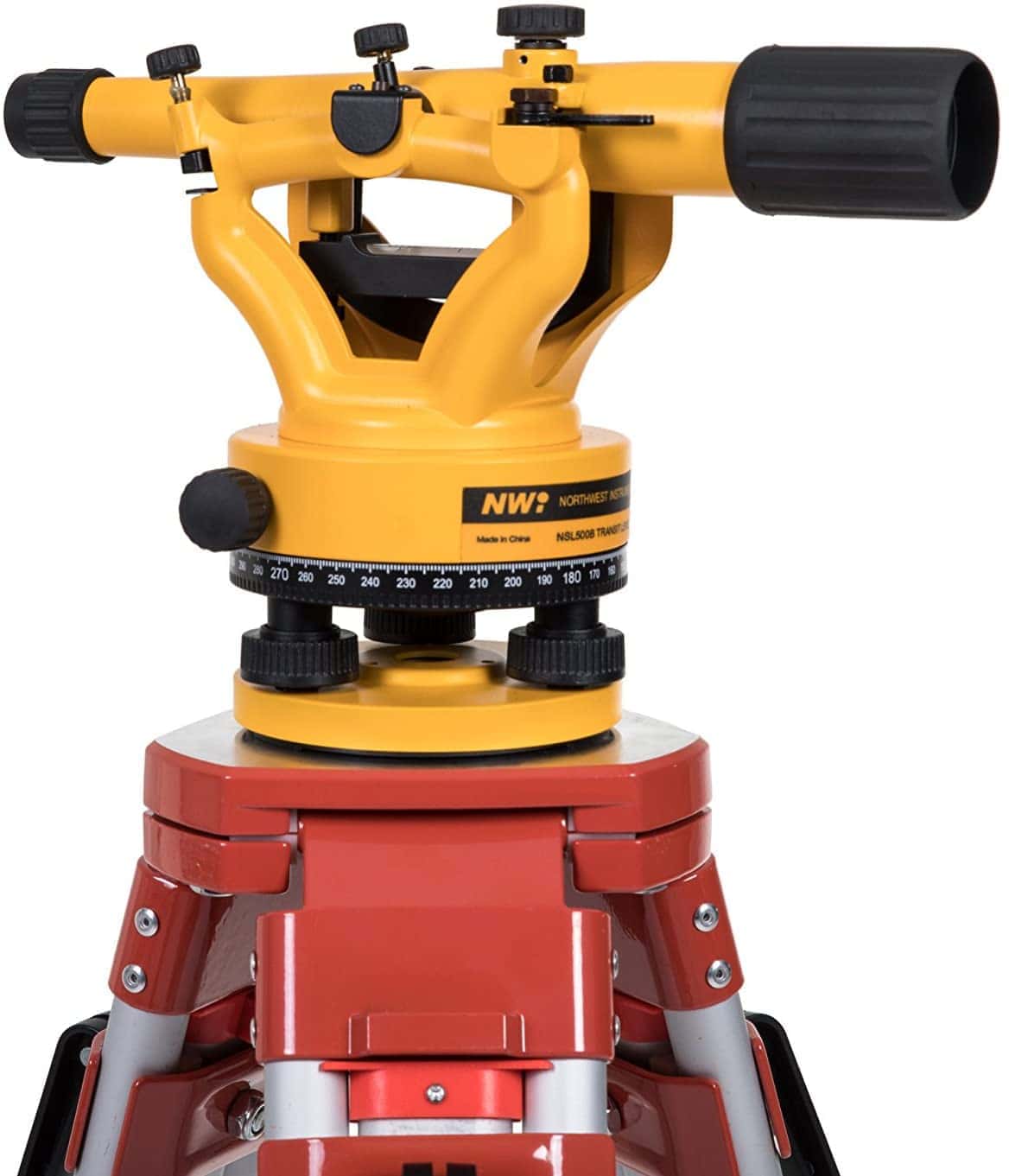
How Does a Transit Level Work?
Essentially, the transit level works the same as the builder’s level. First, you must set up a tripod on which the transit level will be mounted. Once securely mounted to the tripod, you’ll adjust the leveling feet on the transit level until the built-in level indicator reads that it’s level at every point in 360° rotation. So far, there’s no discernable difference between the operation of the transit level and the operation of a builder’s level.
But you can see the difference once you have the level setup and fully adjusted. Now, you can adjust the transit level vertically and horizontally, whereas the builder’s level is only adjustable horizontally. By raising and lowering the front of the telescope, you can effectively measure vertical angles with the transit level while still retaining the elevation measuring capabilities of the builder’s level.
What It’s Used For
Transit levels are used for surveying and building most commonly. They can measure elevations for surveying but can also measure vertical angles so you can get measurements of inclinations in degrees and check how level vertical surfaces are. It’s often used by framers, excavators, and even landscapers.
- Can be used to measure vertical angles
- Does everything a builder’s level does
- More expensive
- Can be more difficult to use
There’s One Main Difference
When comparing the functionality of these two tools, there’s only one significant difference worth noting; the ability to measure vertical angles. Because builder’s levels are only adjustable horizontally, they can only be used to measure elevations. Transit levels, on the other hand, are adjustable vertically, allowing you to measure vertical angles and the same elevations that builder’s levels can measure.
Affordability vs Ability
Transit levels are often more expensive than builder’s levels because of their increased functionality. Therefore, if you only need the ability to measure elevations and you won’t be using the angle measuring capabilities of a transit level, a builder’s level can save you money. But if you think you might want to measure vertical angles in the future, spend a little extra now and get the improved functionality of a transit level.
You Always Need Two People
One thing to remember with these tools is that you’ll always need someone on the other end to hold the measuring rod. You won’t have anything to measure without a measuring rod on the other end. Some higher-end transit rods today use lasers to measure distance, angle, and height, but they still can’t measure elevation without something out there to measure against.
- You’re measuring just elevations
- You’re on a budget
- You want a simpler tool
- You’re measuring angles and elevations
- You can spend a bit more
- You want a tool with more capabilities

Quick Look: Our Top Choices
| Image | Product | Details | |
|---|---|---|---|
Our Favorite Builder’s Level
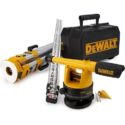 |
DEWALT DW090PK Builder Level with Tripod and Rod |
|
CHECK PRICE |
Our Favorite Transit Level
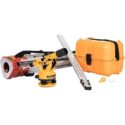 |
NWI NSLP500B Siteline Transit/Level Package |
|
CHECK PRICE |
Our Favorite Builder’s Level: DEWALT DW090PK Builder Level with Tripod and Rod
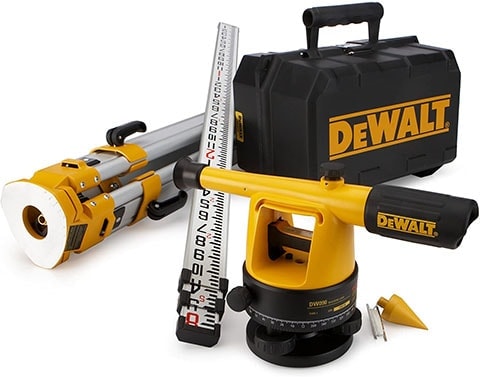
With everything you need to start measuring elevations today, the DEWALT DW090PK is a complete kit. You get a builder’s level with accuracy within ¼-inch per 100 feet and 20x magnification that offers a visibility range of 200 feet or more. It also includes a heavy-duty leveling base that’s quick and easy to set up, plus a measuring rod for your partner to hold on the other end.
Our Favorite Transit Level: NWI NSLP500B Siteline Transit/Level Package
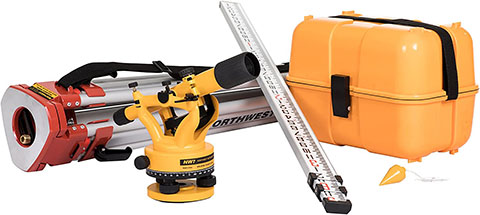
This transit level package includes everything necessary to start measuring not just elevations but angles as well. You get the 20x magnification transit level with an accuracy range within ¼-inch at 100 feet and a working range of 200 feet. There’s even a carrying case to keep it safe. Also included are the builder’s tripod and 9-foot grade rod, ensuring you’re ready to scope out your next build immediately.

Conclusion
For many jobs, these two tools are interchangeable. If you just need to measure elevations and set your markers for the dimensions of a building, you can use either of these tools. But remember, builder’s levels are often cheaper and a bit easier to use since there aren’t as many adjustments. If you need to measure vertical angles, you’ll need a transit level since the builder’s level only measures elevations.
Other Laser Level Posts We've Written:
Contents

